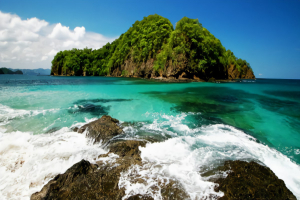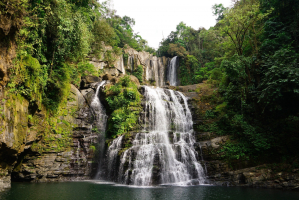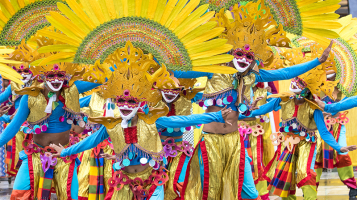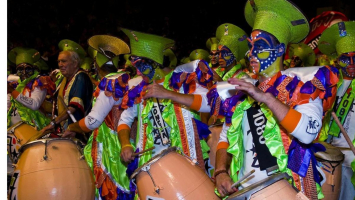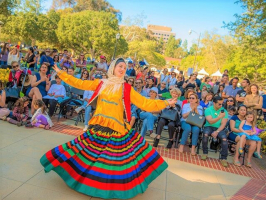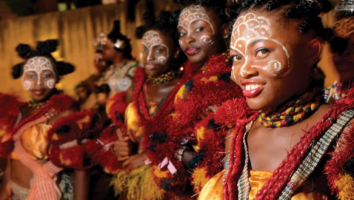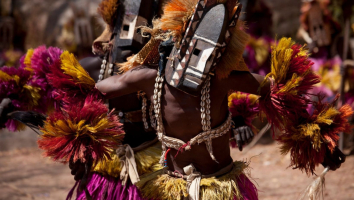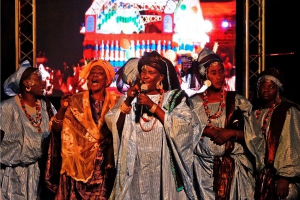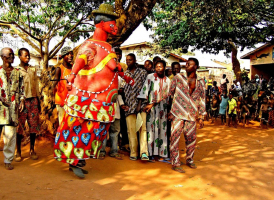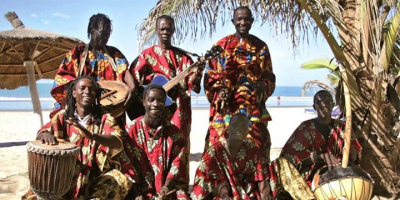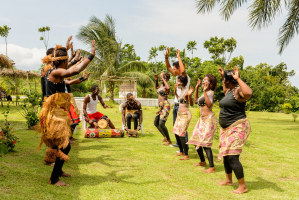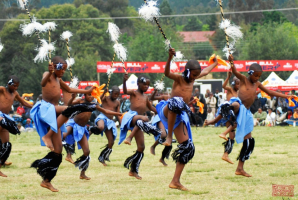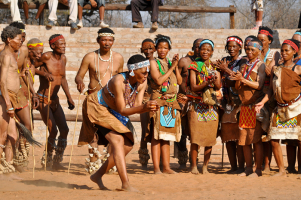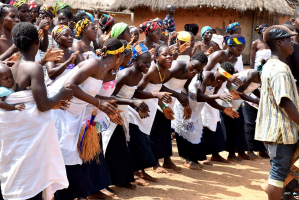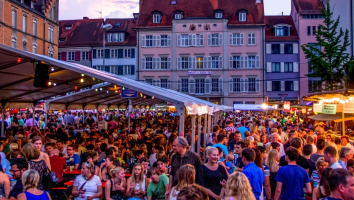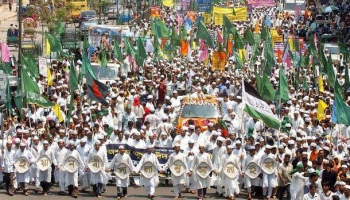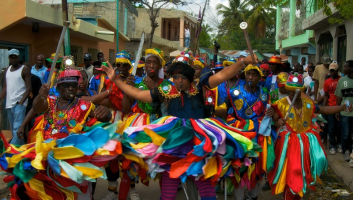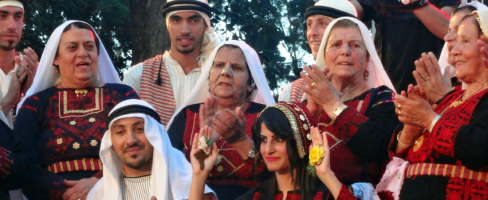Top 8 Most Famous Festivals in Costa Rica
Costa Rica is a Central American country that like many other Latin countries, hosts a number of significant events or festivities that reflect the culture and ... read more...feelings of the Costa Rican people. Many of these celebrations reflect the values and philosophies of its people, particularly religious festivals. Now let's take a look at the top 8 most famous festivals in Costa Rica.
-
When Costa Ricans have finished celebrating the Christmas and New Year vacations, they have another party to look forward to: the Palmares fiestas, one of the most famous festivals in Costa Rico. Palmares, a little town between Alajuela and San Ramon, is noted for having the best fiestas and horse parades in the country. Palmares become the focal point for many people during the second half of January.Each year, the Palmares fiestas begin in the second week of January and continue throughout the month with a number of festivities such as Concerts, fireworks, sporting activities, tents with alcohol and food, and Costa Rican-style bullfighting, and a traditional horse procession.
The fiestas formally begin with the illumination of the fairgrounds, a parade of lanterns, and the opening of the Palmarin Soccer Cup at the stadium. The crowds gather at the start of the tope, a horse parade through Palmares' streets that begins about midday. Participants in the horse parade ride their best horses around the streets, displaying their magnificent steeds with elegant steps.Following the parade, the party continues at the numerous tents, which are improvised bars beneath big awnings built specifically for this January event.
The tradition of Toros a la Tica, Costa Rican-style bullfighting, may be enjoyed at the stadium during the two weeks of the Palmares fiestas. Palmares' outdoor concerts are typically a local favourite. Reggaeton superstars and well-known Latin alternative rock bands will entertain thousands. It is increasingly customary to book major international performances on both Sundays of the fiestas.
Time: January
Location: Palmares
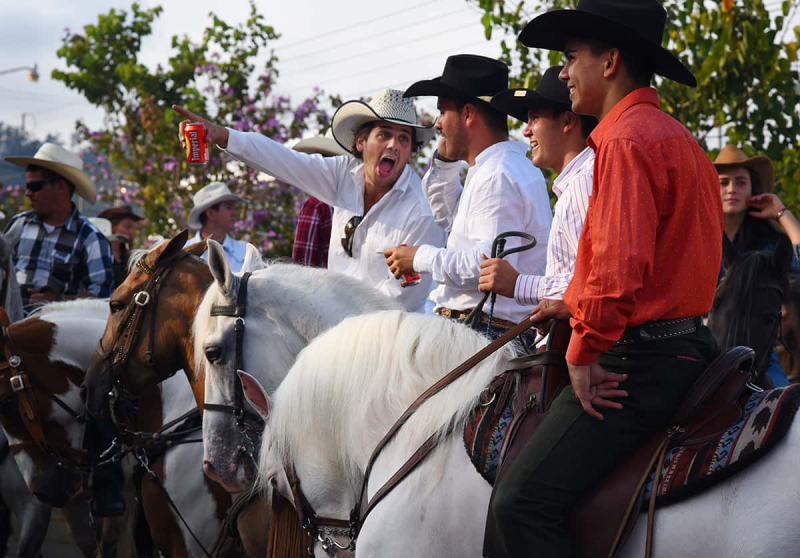
Photo: ticotimes.net Video: Cerveza Imperial -
Every year on January 14th, Santa Cruz hosts the famed Fiestas típicas Nacionales, a Catholic event dedicated to a saint known locally as "Cristo de Esquipulas." Fiestas típicas Nacionales, one of the most famous festivals in Costa Rica, promotes Guanacaste culture. Many individuals from out of town take the day off and travel from all over the country to experience the fantastic atmosphere in town. It's worth mentioning that the Semana Cultural, or Cultural Week, takes place the week before the official start and includes activities such as traditional dance performances.
The rodeo is one of the most essential activities, and it is considered that only brave men dare to master the beast. Other cultural traditions include the Pasacalle, a procession in which people wear large and colourful masks (Mascaradas), and the Tope, a horse parade in which the riders dress up and trot their horses at a special speed. This event is mostly focused on music, and the marimba, a percussion instrument, serves as the opening act. Carousels for kids - and why not older ones? - mechanical games, street cuisine, performances, and much more are all part of the Fiestas típicas Nacionales de Santa Cruz. It is a very special two-week period of festivities during which the Santacruceños demonstrate their pride in their culture.
Time: January 14th
Location: Santa Cruz
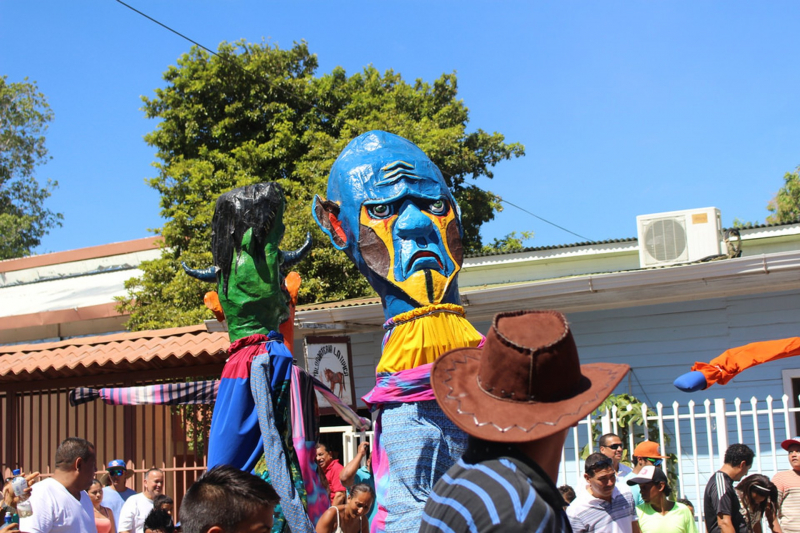
Photo: rove.me Video: Guanacaste Aérea -
The multi-day Fiesta of the Diablitos, celebrated by the Boruca people of the region, pays honour to ancestral spirits while commemorating the tribe's victory over Spanish conquistadors. The males of the community dress up as diablitos, wearing colourful hand-carved wooden masks, and one person dressed as a bull, representing the Spanish conquistadors and illustrating the conflict between the Borucas and the Spanish. While the conquistadors appear to have the upper hand at times, the Boruca finally triumph, as they have in the past. The Boruca sip chicha, a traditional fermented maize liquor, throughout the festival.
The masks are the most significant element of the costumes. Each member is empowered by the mask to combat and expel the evil of the Spanish invaders, who are represented by a mock bull. The celebration masks incorporate devil characteristics that the indigenous people inherited symbolically from the Spanish Catholics. Fiesta de Los Diablitos takes place in two indigenous communities: Boruca (December 30 – January 2) and Rey Curre (January 2). (the first weekend of February). It is open to the public, however, visitors must pay a fee to take photographs.
Time: December- January
Location: Boruca and Rey Curre
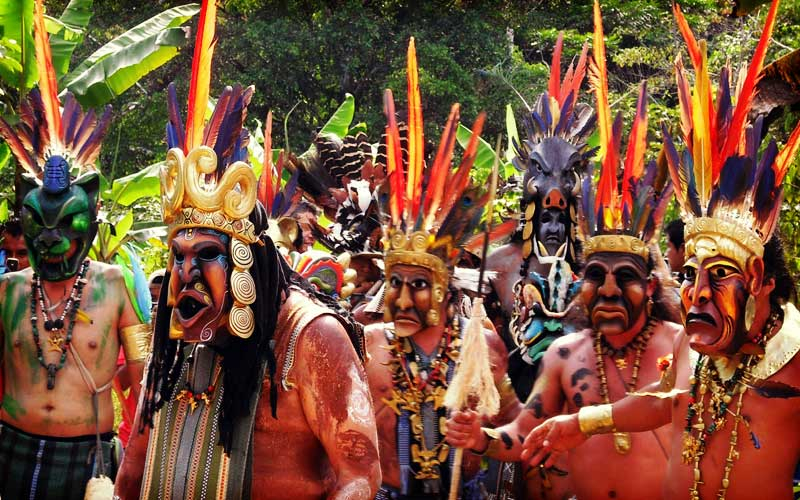
Photo: uvolunteer.net Video: Rob Traquair -
For Costa Ricans, the Festival de la Luz is one of the most famous festivals in Costa Rica. The celebration, which takes place in downtown San Jose, includes a procession of floats, masquerades, live music, and fireworks. The Festival de la Luz is associated with holiday celebrations in Costa Rica's capital because it takes place in December. Its bright, creative, and lighting accents make it one of Costa Rica's most spectacular sights at the end of the year.
For the past 15 years, the Festival has taken over the Paseo Colon and Avenida Segunda, two of the capital city's principal streets, filling them with colours, magical music, and fantastic characters. A significant number of Costa Rican and international musicians perform in the Bets Street Style Theater at the festival. The Festival de la Luz is unquestionably the most popular "top ten things to do in Costa Rica" for the upcoming December 10th.
This historic festival, organized by the Municipality of San Jose, features the best musicians in the country, as well as lighting floats wrapped with intricate embellishments, and enhances Costa Rican culture each year. On Friday, December 13, 1996, the first Festival de la Luz was held. Since 2005, the Festival has included a traditional procession called "Pasacalle," which usually begins at 3 p.m. and features carnival groups, dance, masquerades, and bands, among other things.
Time: December
Location: San Jose
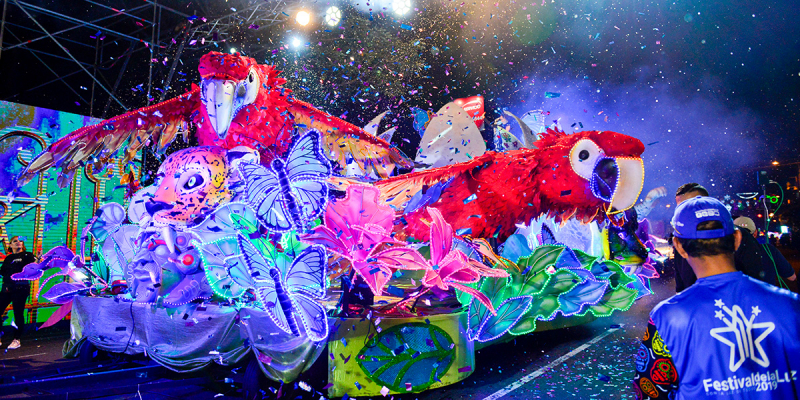
Photo: visitcentroamerica.com Video: Festival de la Luz, Costa Rica. Oficial -
Día del Boyero (Day of the Oxcart Driver) is celebrated in San Antonio de Escazú, Costa Rica, on the second Sunday of March. It's a day when the locals take to the streets to commemorate Costa Rica's tradition of using oxcarts to transport crops around the country.Booths have been set up to sell delectable local delicacies as well as arts and crafts. The parade is a major attraction. It begins with music and young dancers then move on to the boyeros. Approximately 100 boyeros marched in the procession, showcasing their oxen and oxcarts. Each participant wore a number in the hopes of winning an oxcart, which was raffled off to all attendees.
The oxen, oxcarts, and boyeros congregate on the town's soccer field at the end of the parade. This is an excellent opportunity to get up and personal with the oxen. (Despite the fact that there was a slight dread of being headbutted or kicked...). The oxcart is a well-known symbol of Costa Rican agricultural work. They are hand-painted and elegantly ornamented. Originally, each region had its own design to identify the oxcart driver's origin.
Time: March
Location: Escazú
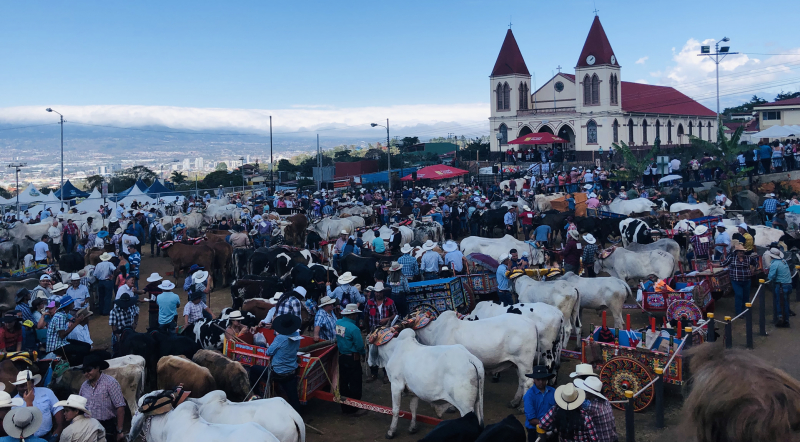
Photo: blog.nativu.com Video: China Xinhua Español -
Costa Rica celebrates Da de las Culturas on October 12th each year. This national holiday commemorates Christopher Columbus' first voyage and the discovery of the Americas. Costa Rica has changed the name of the national holiday from Da de la Raza to Da de las Culturas since 1994. This change honours the diversity of cultures that have contributed to Costa Rica's development and culture. Da de las Culturas is today a celebration of Costa Rica's legacy, colonization, and cultural variety.
This party is celebrated with a colourful carnival full of dance and cultural demonstrations the week before the 12th. You may watch dance and sing all across Costa Rica, but Limón is the place to be for the full Da de la Culturas experience. A wonderful time is almost guaranteed, and it's all in the name of history and cultural fusion. People will be lining the streets to cheer on the "beauty queens," marching bands, and vividly coloured costumes, as well as very colourfully clothed and well-coordinated dancing troupes. Tourists and locals alike flock out onto the streets during this time to be met by a vibrant mix of streamers, dancers, and celebrations.
Time: October
Location: Limon, Caribbean Coast
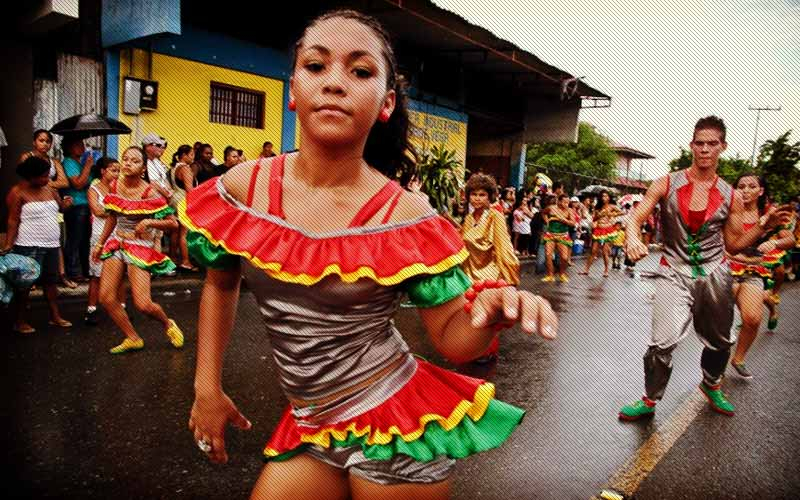
Photo: uvolunteer.net 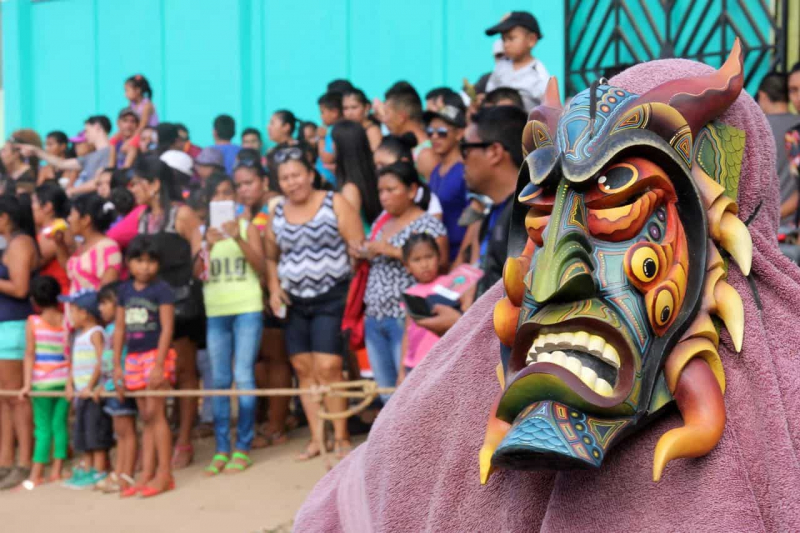
Photo: ticotimes.net -
Zapote is a town located approximately north of San Jose, the capital city of Costa Rica. The town comes alive during the last week of each year when Costa Rica's greatest bull riders flock to Zapote for the celebration known to Costa Ricans as the super bowl or world cup final of bull riding. Contrast the Spanish sport of bullfighting with the Costa Rican sport of bull riding. The event in Zapote is more like a conventional rodeo, except that members of the audience are permitted to enter the ring and try their hand at bull riding, which results in some amusing sights and dramatic falls.
There is a lot to entertain outside of the bull ring at the Fiestas Zapote. Ferris wheels, bumper cars, and other fair rides abound on the expansive fairgrounds. Another celebration highlight is traditional Costa Rican junk food. Churros, cotton candy, candied apples, and other sugary delights will keep the kids happy. If you grow tired of eating and watching the bulls, there is also live music, dancing, and traditional activities to keep you entertained.
Time: December-January
Location: Zapote
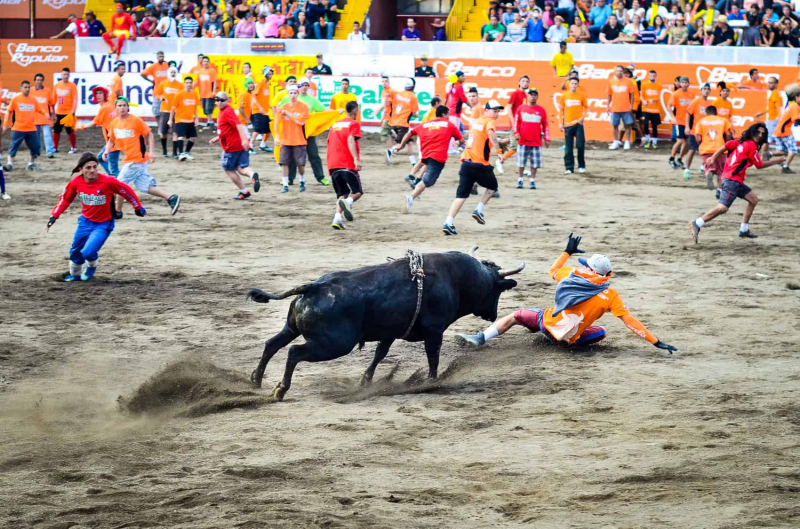
Photo: ticotimes.net 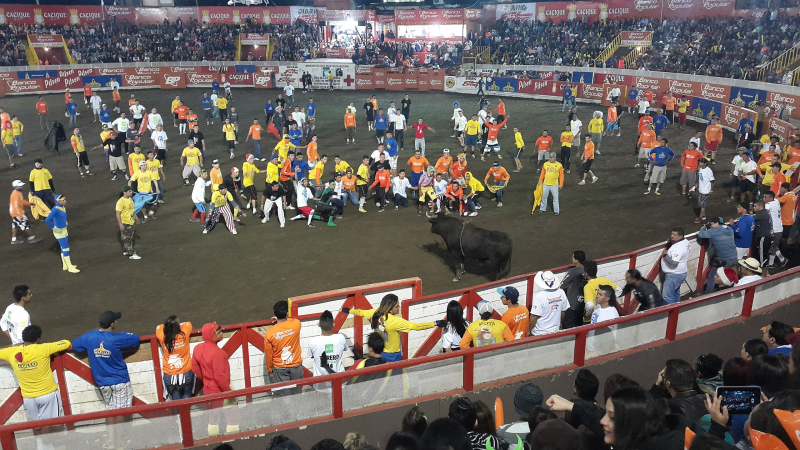
Photo: commons.wikimedia.org -
Envision is considered one of the most famous festivals in Costa Rico. While many festivals profess to care about the environment with token activities such as recycling, Envision was actually founded to bring together like-minded people in a celebration of nature and spirituality. While the festival is primarily about music, it also includes a full schedule of yoga classes, workshops, speakers, and other educational opportunities.
The festival is built on eight pillars, all of which are critical to its success and sustainability: permaculture, spirituality, movement, art, music, community, health, and eco-building. The latter point is very important in terms of festival planning, as the festival strives to be a "Leave No Trace" event. As a large gathering, this necessitates both attendee dedication and a significant amount of instruction on the part of organizers.
Envision has steadily established a name among yoga aficionados, music fans, and others interested in the alternative, "green" lifestyle, both in Costa Rica and globally. In keeping with the community focus, the programming incorporates both foreign and local artists and speakers, resulting in a truly Costa Rican experience.
Time: February
Location: La Uvita de Osa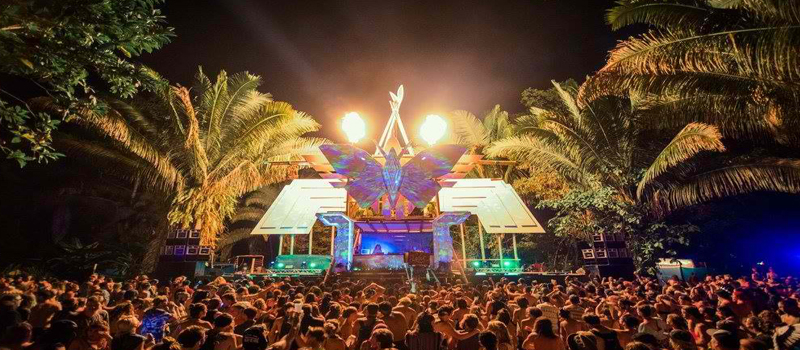
Photo: trufflemagic.com Video: Envision Festival










